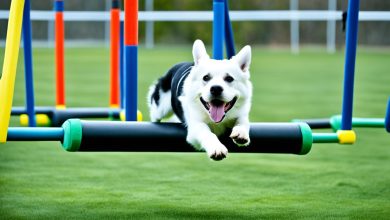
Positive reinforcement is a strong tool. We can use it every day to grow and form good habits. It means praising and rewarding the behaviors, thoughts, and traits we value. With it, we foster an encouraging setting. This setting helps us live a happier and more rewarding life.
It works in many areas of our life. Think relationships, schooling, and self-improvement. In relationships, it strengthens connections and boosts understanding. In education, it drives students to try harder. For personal growth, it’s key for building better habits that make us happier.
Knowing how positive reinforcement affects behavior is key. It’s a result that makes a behavior more likely to happen again. It can be praise, gifts, or kind gestures. The brain’s ability to change, or neuroplasticity, is why positive reinforcement works well.
Key Takeaways:
- Positive reinforcement can be integrated into daily routines to foster personal growth and healthy habits.
- It involves recognizing and rewarding desired behaviors, thoughts, and character traits.
- Positive reinforcement can be implemented in relationships, education, and personal development.
- Understanding the impact on behavior and neuroplasticity is essential for effective positive reinforcement.
- By embracing positive reinforcement, we can create a more positive and fulfilling life.
Understanding Positive Reinforcement and its Impact on Behavior
Positive reinforcement is a key tool in changing behavior. It rewards actions to make them more likely to happen again. This approach is widely used in schools, at home, and for self-improvement.
It can range from saying “good job” to giving out prizes or high-fives. Positive reinforcement is about boosting the action, not just giving out rewards. It helps build good habits by making the brain link actions with positive feelings. This is due to something called neuroplasticity.
Neuroplasticity lets our brains form new connections easily. Because of it, positive reinforcement can create new brain paths. These paths make it easier to keep up with good behaviors. This change is crucial for developing lasting habits.
To make sure positive reinforcement works, it’s essential to track how behaviors change over time. Keeping an eye on progress helps us see what’s working. Being consistent, clear, and quick with reinforcement is key for success.
Using positive reinforcement means being thoughtful and alert. It’s important to notice and support good behaviors in all parts of life. Giving positive feedback and rewards on time encourages more growth. This approach also makes people feel good about themselves, which helps in many ways.
Example:
“Using positive reinforcement in my classroom changed how my students act and learn. By praising their class involvement or giving small gifts, their excitement and willingness to learn grew. It shows how such reinforcement can boost students’ confidence and learning joy.”
– Jane Anderson, 5th-grade teacher
Implementing Positive Reinforcement in Everyday Life
Positive reinforcement can deeply affect our daily lives. It shapes our relationships, communication, and personal development. By using it daily, we create a supportive, empowering atmosphere.
It’s vital in relationships to strengthen bonds and improve how we talk to each other. Praising and valuing the efforts of those we care about builds trust. A kind word or a small act of kindness can mean a lot.
In education, positive reinforcement motivates students and encourages a growth mindset. Celebrating their successes, big or small, boosts their confidence. Being genuine and consistent with our praise is key, and it should match each person’s needs and strengths.
Positive reinforcement also works on ourselves. It helps us form good habits and grow personally. Celebrating our victories, caring for ourselves, and setting doable goals are all part of this. It strengthens us for a more satisfying life.
FAQ
What is positive reinforcement?
How does positive reinforcement affect behavior?
Where can positive reinforcement be applied?
How can positive reinforcement be used in relationships?
How does positive reinforcement benefit education?
What is the role of neuroplasticity in positive reinforcement?
Source Links
- https://www.scienceofpeople.com/positive-reinforcement/
- https://martabrzosko.medium.com/positive-reinforcement-is-the-most-powerful-tool-for-reshaping-your-mind-bb7861a45a80
- https://www.linkedin.com/pulse/what-positive-reinforcement-really




